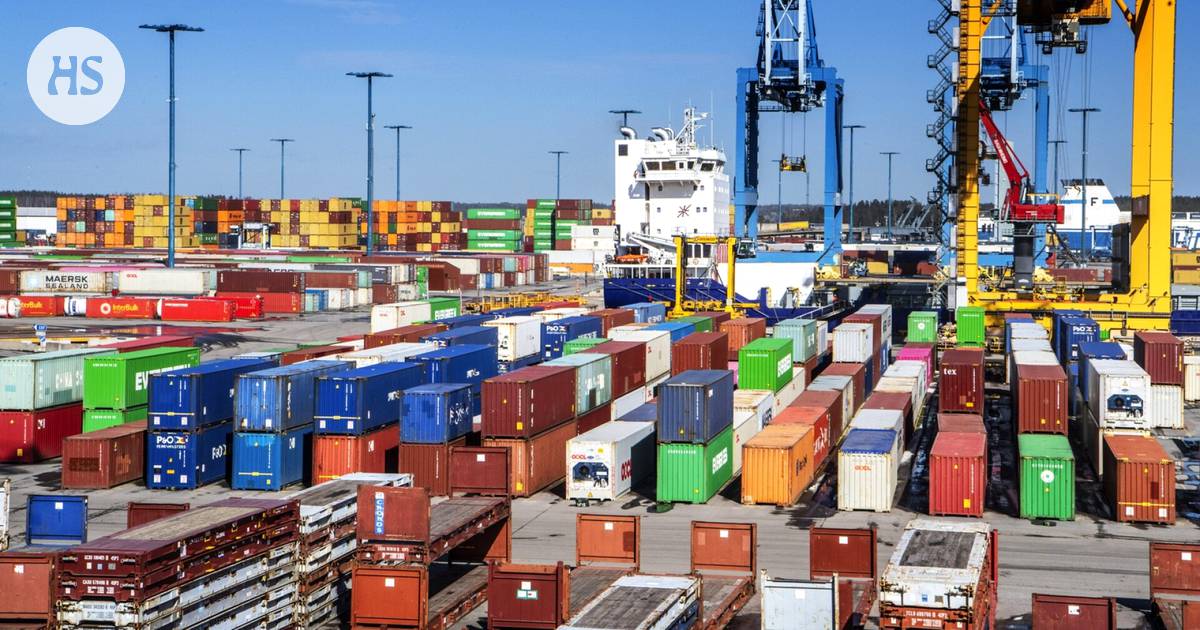Work in Finnish ports continued on Monday after four weeks of political strikes. According to the stevedoring company, it was still calm in the ports on Monday, but a rush is expected towards the end of the week.
Strikes The day after started off calmly on Monday in Helsinki’s Vuosaari port, says the CEO of steveco, a stevedoring and logistics company. Ari-Pekka Saari For HS on Monday morning. In addition to Helsinki, Steveco operates in Kotka and Hamina, among others.
“All processes have started normally. The cargo volumes to be shipped are still relatively moderate today. I would think that towards the middle of the week, the situation will accelerate quite strongly,” says Saari.
Thousands of people working in ports and other industries returned to work on Monday morning after the end of the four-week political strikes by the member unions of SAK. According to SAK, a total of around 7,000 workers were on strike.
The island according to the start of the strike, the quantities of goods in the ports could be handled in a controlled manner without major problems, but from the point of view of the companies that send or receive export products to the world, the port was closed.
It means that during the strike, foreign trade products have been in various warehouses waiting to enter the port.
“For example, the export industry for the most part does not have much storage capacity at the production end. The goods should be in circulation all the time, as well as in imports. The goods must have had to be placed where the space could only be developed,” says Saari.
He expects that the dams of temporary storage will begin to discharge towards the ports during the current week.
“Today [maanantaina] is calm, tomorrow already busier and the day after tomorrow busy”, Saari assessed on Monday.
After that, there’s enough of a rush. Saari estimates that it will take several weeks for the situation in the ports to normalize. According to Saari, the situation is similar in all ports where the company operates.
“Two weeks is definitely not enough, three weeks might not be enough. Yes, this exceptional situation will take several weeks. Of course, I hope that the rush can be melted away from there as quickly as possible.”
In voice CEO of the port Anders Ahlvik told HS on Monday morning that the port is “full of activity”.
“There are ships at every ramp and work is done as usual. I haven’t heard that there was anything special.”
Cars, among other things, are brought to Finland through the port of Hanko. Practically all new cars come to Finland by sea, and about three out of four of them are brought through the port of Hanko.
Consequently, cars ordered in Finland have been standing abroad during the strike. CEO of Autotuojat ja -teollisuus ry Tero Kallio told HS in Marchthat, for example, cars manufactured for Finnish customers have accumulated in German ports.
Ahlvik, CEO of Hanko Port, says that there has been little movement of goods in the last month, but now the cargo that was waiting in the warehouse is slowly starting to arrive at the port. In Hanko, the first ships came to the port on Monday morning.
“The ships were fully loaded when they came in the morning. Presumably [satamassa] there will be a rush when cargo from factories and other production starts flowing here.”
He estimates that it will take a couple of weeks for the flow of goods to normalize.
“There is no exact picture of how much [tavaraa] has entered Finland through other than normal routes, such as through Sweden or Estonia. But yes, this takes weeks,” says Ahlvik.
Go down Monday has already been a busier day than average at the port, says the CEO Erik Söderholm on Monday afternoon.
“When I came to work in the morning, there were already five ships in the port. And the sixth comes in the evening. I don’t immediately remember that we had that many ships at the pier on Monday morning,” says Söderholm.
Söderholm doesn’t think the pace will pick up any more. He thinks that the rush at the port will remain somewhat at Monday’s level for another couple of weeks, until the cargo fog has been lifted and the port returns to normal.
“For us, the situation is easier in the sense that we don’t have large quantities of forest industry products here. We’ll probably get things moving faster.”
Also Söderholm says that during the strike some goods have been brought to Finland through Estonian and Swedish ports. In practice, the goods have been fetched from the ports of neighboring countries by trucks.
“Through that, you can’t drive the amount you normally drive. That way, you can’t drive the total volume as fractions.”
Although cargo traffic that requires overcrowding has been at a standstill during the strikes, passenger traffic from the port of Turku to Sweden has been running all the time. According to Söderholm, many trucks with drivers have also traveled with the passenger ships.
“Traffic in Sweden was quite busy throughout the strike. There must have been quite a few trucks that normally don’t go there.”
He thinks that trucks have traveled through Sweden all the way to Europe along with the passenger traffic.
“It must have become expensive, but sometimes there are things that have to move, even if there is a strike.”
